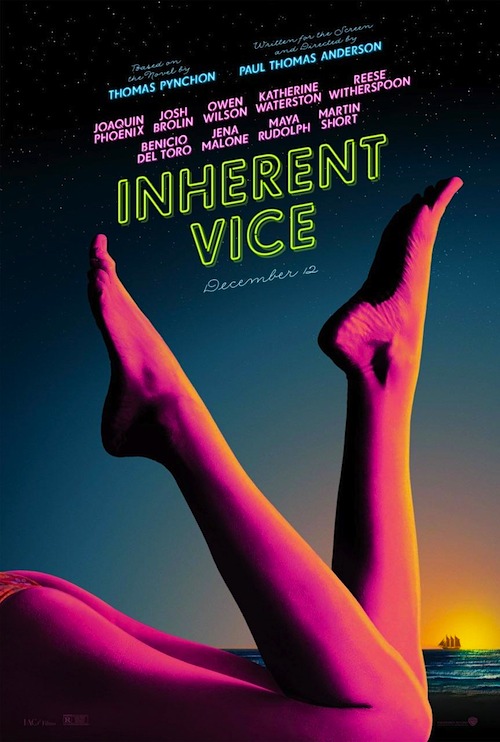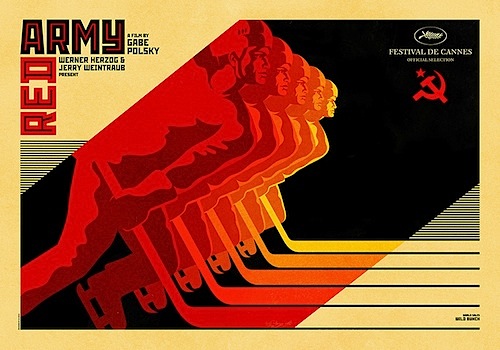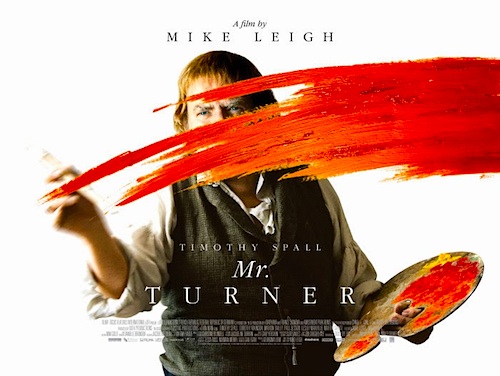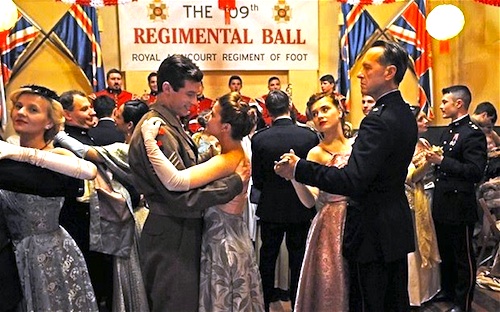By Joe Bendel. Without question, the Thomas Pynchon character that most persistently arouses reader fascination is Pynchon himself. Already, we are seeing reports Pynchon makes a brief cameo appearance in Paul Thomas Anderson’s adaptation of his 2009 mystery novel (for lack of a more precise term) and attended the New York Film Festival’s press screening. Of course, it is dashed difficult to verify any of that, since nobody knows what he looks like. Regardless, Anderson’s Inherent Vice is guaranteed to be obsessively analyzed and debated after it screened as the Centerpiece of the 52nd New York Film Festival.
A woman furtively walks into stoner-detective Larry “Doc” Sportello’s beachfront crash-pad, but this is no lady. She is Shasta Fay Hepworth, the ex-girlfriend he still carries a torch for. She has need of his professional services, but would rather their meeting look like an assignation. Currently the kept woman of real estate mogul Mickey Wolfmann, Hepworth has been approached by his wife Sloane to co-conspire in a plan to have said sugar daddy committed. Soon thereafter, Sportello is serendipitously hired by Black Panther Tariq Khalil to collect a debt owed by Aryan Brother Glen Harlock, who now works as Wolfmann’s bodyguard.
Unfortunately, things really get complicated when Sportello is waylaid in brothel, waking up next to Harlock’s dead body and surrounded by a circle of cops, most inconveniently including his old nemesis Christian “Bigfoot” Bjornsen. Yes, Inherent is a film that prompts run-on sentences. It also has more name characters than Gone with the Wind and Berlin Alexanderplatz combined, nearly all of whom have back-stories. As Sportello works his vaguely defined case, he crosses paths with a missing musician forced to be a federal informer, his presumptive widow, a maritime attorney, a sex worker, the sexpot daughter of a former client, a lethal loan shark, a shady rehab clinic, multiple G-Men, and the drug-addled Dr. Rudy Blatnoid, DDS, played by the scene-stealing Martin Short.
If you can make heads or tails of the plot, you are doing better than Anderson, but he certainly captures the story’s inherent Pynchon-ness. You have the liberal supply of nicknames, the obsessive telling of tales, and the ever deepening but never illuminated mythology (but Pig Bodine is M.I.A.). Anderson also has a strong sense of the 1970s vibe and attitude, marking something of a return to his Boogie Nights roots. In fact, Vice comes across as so of the era, it ironically feels dated. The frequent but clumsy swipes at Pres. Nixon, Gov. Reagan, COINTELPRO, and Dirty Harry-style policing seem rather quaint and nostalgic now that we have the NSA rifling through our email and social networks.
 Inherent certainly works to an extent, but it represents a triumph of form over substance. Anderson constantly proves just how much he gets Pynchon, channeling his breakneck anarchy. Although Abderrahmane Sissako’s Timbuktu is a vastly superior work, they are alike in that every scene of each film has its own unique significance. In the case of Inherent, sequence after sequence further deepens the mythology and features their discrete mini-arcs.
Inherent certainly works to an extent, but it represents a triumph of form over substance. Anderson constantly proves just how much he gets Pynchon, channeling his breakneck anarchy. Although Abderrahmane Sissako’s Timbuktu is a vastly superior work, they are alike in that every scene of each film has its own unique significance. In the case of Inherent, sequence after sequence further deepens the mythology and features their discrete mini-arcs.
Unfortunately, the major principals are hard to fully embrace. Doc Sportello was clearly formulated for maximum likability, but the undeniably gifted Joaquin Phoenix often looks like he is uncomfortably laboring to let his freak flag fly. Instead, he makes a broody Lebowski. Frankly, Josh Brolin is even shtickier as Bjornsen, recycling all the worst elements of his turns in Men in Black III, W., and Gangster Squad. Fortunately, there is a rich feast of colorful supporting performances to keep things lively, including memorable contributions from Short, Jena Malone, Owen Wilson, Eric Roberts, Hong Chau, Bernicio Del Toro, and Serena Scott Thomas.
Considering how much works in Inherent, it is frustrating that the parts don’t snap together into a more satisfying whole. The period details crafted by the production design team are spot on and cinematographer Robert Elswit bathes it all in a noir Chinatown glow. At times, Thomas’s approach is inspired, particularly his narration, but key on-screen personnel do not always best serve the film’s interests. Recommended for Pynchon fans and those who appreciate self-consciously intricate noirs, Inherent Vice opens December 12th, following its premiere as the Centerpiece of this year’s NYFF.
LFM GRADE: B-
October 7th, 2014 at 9:47pm.


